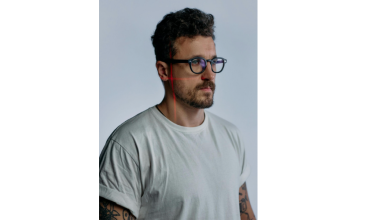
If you want to better understand where the future of AI is being built, stop watching the biggest stages and start looking at the edges.
While Big Tech dominates AI headlines, I believe the real progress is being made elsewhere, in the world of GenAI startups. Small, focused teams are quietly driving the true potential of AI and unlocking tangible AI products that are not only working, they are transforming how business gets done, not just in the future, but today.
And it’s time CFOs, boards, and executive leaders recognised their tremendous value.
Startups Don’t Just Drive Innovation, They Are the Innovation Engine
In every major tech wave, it’s rarely the established incumbents who create the breakthrough products, services and apps, it’s often the outsiders.
Apple didn’t invent ride sharing. Uber did.
Google didn’t invent the leading online marketplace for accommodation – Airbnb did.
Amazon didn’t invent one of the first streaming platforms that provides us access to millions of songs for free, Spotify did. Our Smartphones and their app stores just enabled them. That’s the playbook. Big tech and their platforms scale the infrastructure, but startups often bring the ingenuity, urgency, and risk appetite to build the new ideas that change the world.
The same is playing out in this new race to unlock AI’s potential.
At Meliora, we’re backing generative AI founders solving real problems in real time, not chasing hype but building tools that businesses can actually use now. From automating compliance to streamlining procurement, these founders aren’t imagining the future of AI. They’re distributing it.
Urgency Beats Infrastructure
While Big Tech fine-tunes large models and negotiates internal processes, startups are sprinting. With smaller teams and sharper focus, they’re closer to the problem and faster to the solution.
Take Quickfind AI, which simplifies purchasing decisions for SMBs with intelligent, conversational workflows. Or Fluency AI, which turns fragmented SOPs into usable, generative playbooks for large teams. These companies are delivering practical, scalable AI, not someday, but right now.
That speed, focus, and user obsession is what big organisations often lose. But it’s exactly what they need to recapture if they want to stay relevant in an AI-first world.
Real AI Is Already Here, and It Doesn’t Look Like AI
Forget the keynote hype reels. The best AI today doesn’t try to look futuristic. It just makes work better, enabling existing systems and the people behind them to work smarter.
Relevance AI is empowering teams to build sophisticated productivity tools without writing lines of code. Blunge AI is helping marketing teams generate brand-safe visuals in seconds. None of this is a “future vision.” It’s happening already and at scale.
And that’s the shift we need to recognise. The future of AI won’t be one big leap. It will be thousands of small, usable innovations that spread quickly because they work.
Business Need Startups More Than Ever
Startups are no longer just disruptive, they are an essential part of the innovation ecosystem. In fact, many of the most powerful tools business uses today were born in dorm rooms, not boardrooms.
From Slack to Stripe to Canva, the pattern is clear. Startups build, platforms enable, and enterprises adopt.
It’s not a matter of big versus small; it’s an ecosystem. But if companies want to keep pace with AI’s next evolution, they can’t build everything in-house. They need to plug into the creativity, focus, and urgency that startup teams deliver best.
That’s why we at Meliora believe in them.
The Bottom-Up Future of AI
If you want to truly understand what’s next in AI, don’t default to the biggest names in the room. The most meaningful breakthroughs are coming from focused, fast-moving startups solving real problems with clarity, speed, and purpose.
Because this is where the creative intelligence of AI lives, and the future belongs to those who know where to look.





